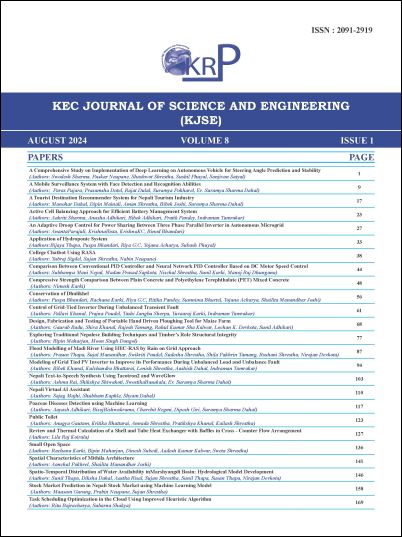Application of Hydroponic System
DOI:
https://doi.org/10.3126/kjse.v8i1.69262Keywords:
Hydroponics, Nutrient management, Growing systems, Vertical farming, Economic viabilityAbstract
Hydroponics is a system of growing plants in a nutrient-rich solution without soil. The plants are grown in a controlled environment, such as a greenhouse, and the solution is circulated around the roots of the plants. This allows for more efficient use of water and nutrients, as the plants can absorb the nutrients they need directly from the solution. There are several different types of hydroponic systems, including deep water culture, nutrient film technique, and aeroponics. Each system has its own advantages and disadvantages, and the choice of system will depend on the specific needs of the plants being grown. One of the main advantages of hydroponics is that it allows for more efficient use of resources. Because the plants are grown in a controlled environment, water and nutrients can be delivered directly to the roots of the plants, reducing the amount of water and fertilizer needed. This can result in faster growth rates and higher yields compared to traditional soil-based methods. Another advantage of hydroponics is that it allows for more precise control over the growing conditions. The pH, nutrient levels, and temperature can all be carefully controlled to create the optimal growing conditions for the plants. This can result in healthier plants and higher quality produce.




